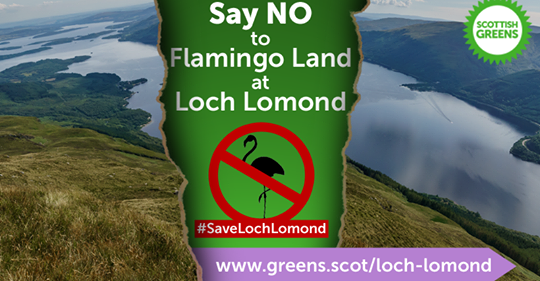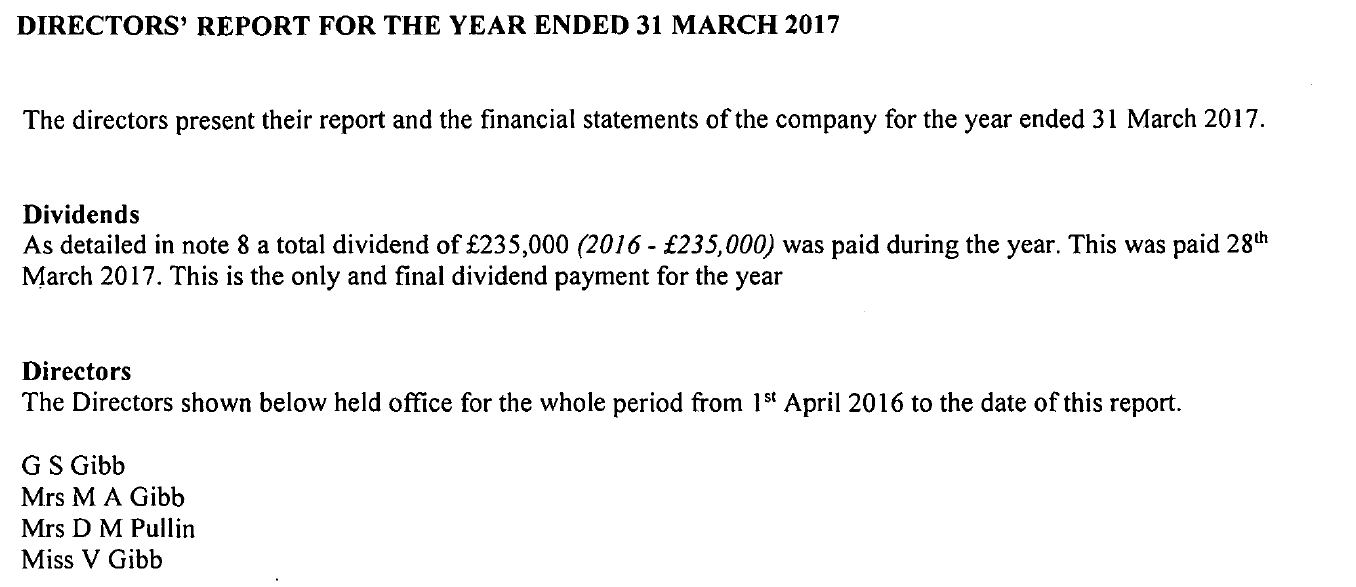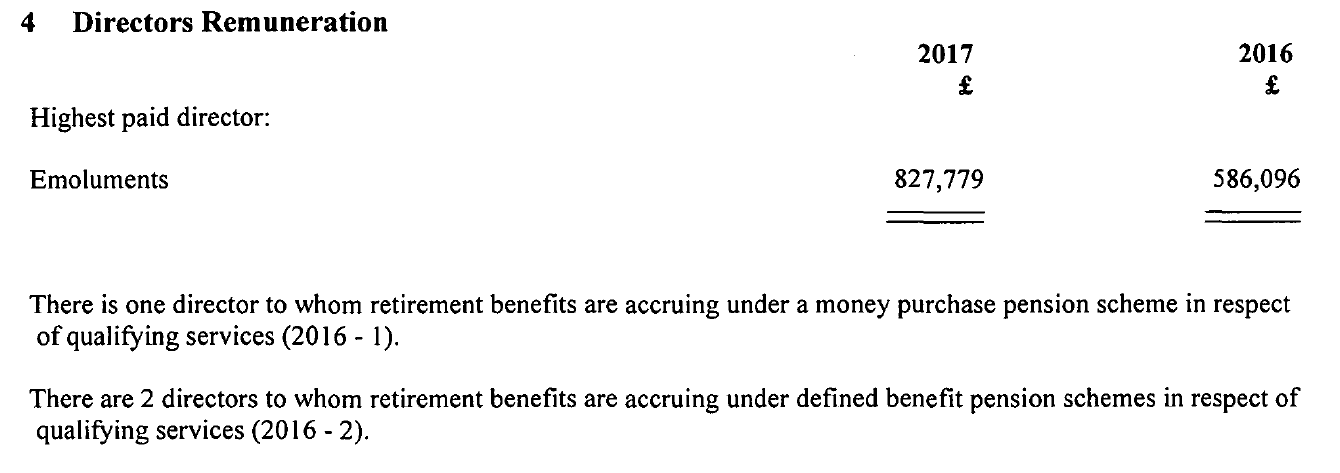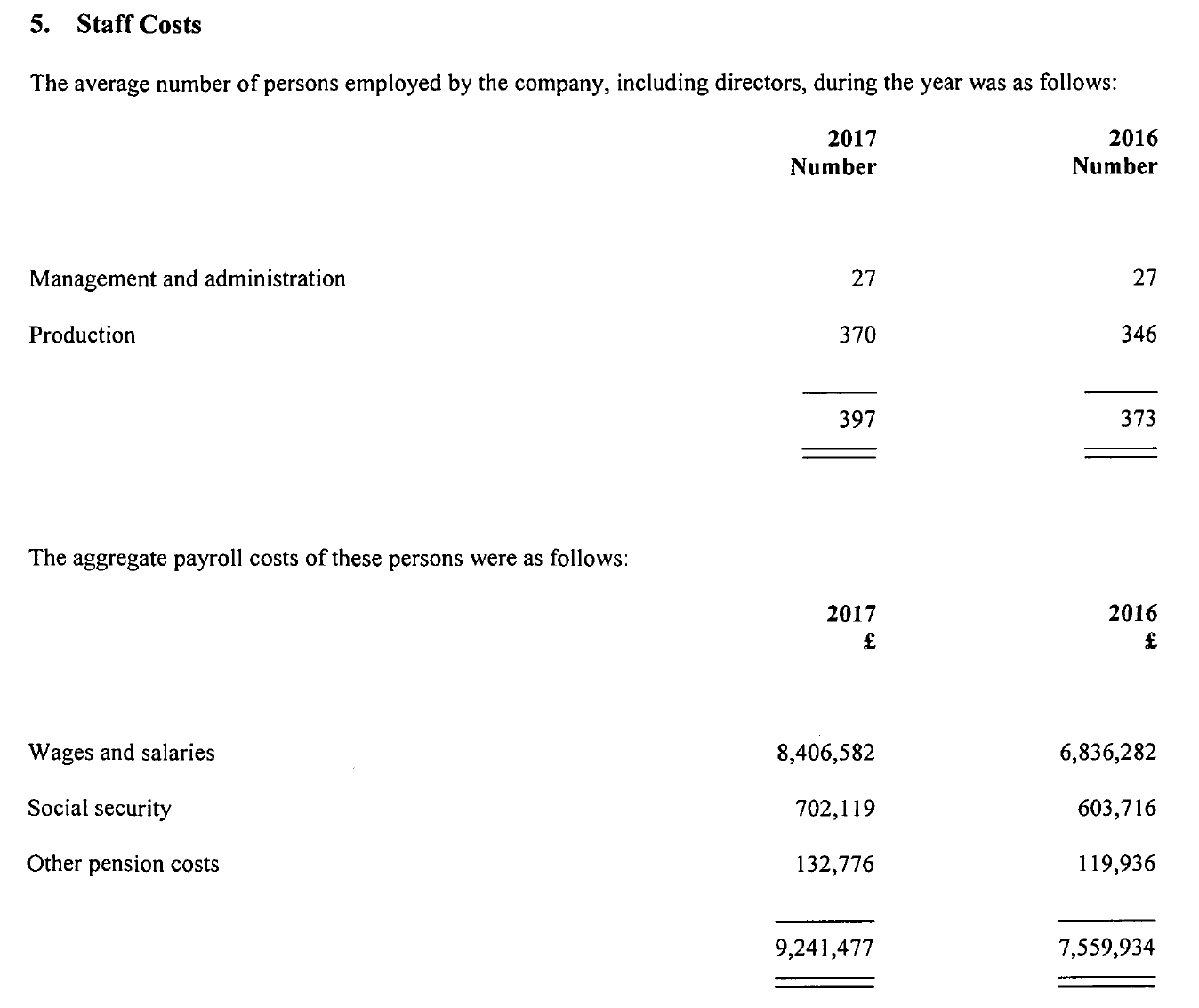 The launch of a campaign last week (see here) by Green MSP Ross Greer to get people to object to the Flamingo Land Planning Application and promoted by Save Loch Lomond (see here) has had a huge response. 26,520 people to date have registered objections on the portal the Greens have set up Whether the Loch Lomond and Trossachs National Park Authority will accept objections lodged through a third party remains to be seen. If they do so, in planning terms I suspect they will try to treat this as one single objection supported by 26,520 people, which would be not nearly as difficult to deal with as 26,520 detailed individual responses, all making different points. Whether they can do this will depend on how many of the 26,520 have submitted individualised objections. The more that have done so, the bigger the planning headache.
The launch of a campaign last week (see here) by Green MSP Ross Greer to get people to object to the Flamingo Land Planning Application and promoted by Save Loch Lomond (see here) has had a huge response. 26,520 people to date have registered objections on the portal the Greens have set up Whether the Loch Lomond and Trossachs National Park Authority will accept objections lodged through a third party remains to be seen. If they do so, in planning terms I suspect they will try to treat this as one single objection supported by 26,520 people, which would be not nearly as difficult to deal with as 26,520 detailed individual responses, all making different points. Whether they can do this will depend on how many of the 26,520 have submitted individualised objections. The more that have done so, the bigger the planning headache.
I am not sure, however, that at the end of the day this matters as the whole Flamingo Land development always was political and will I believe be decided politically. What Ross Greer’s initiative is doing, building on concerns expressed by people locally (including some local politicians) and nationally, is turning the Flamingo Land Planning Application into a national political issue. That is welcome.
The underlying political issue is not about planning as such but about landownership and who should benefit from that and Ross Greer’s campaign makes that clear:
“Most of this land is under the stewardship of Scottish Enterprise, a government agency. It could belong to the community and there’s a lot of local interest in taking the site into community ownership. There are a range of visions for Balloch and these voices need to be heard. The fact that Scottish Enterprise are choosing to sell it off for a quick buck is something we must stand against.”
Scottish Enterprise, as quoted in the Herald, is still in denial about this with its talk of selling the land “for an appropriate market value so we get maximum value for the publlc purse”.

To Scottish Enterprise its all about markets, not people, and development. That raises the question of who the Flamingo Land proposal will really benefit? While supporters of the development claim that Flamingo Land will bring “much needed local jobs”, the evidence from Flamingo Land’s most recent accounts Flamingo Land Ltd Accounts to March 2017 tells a rather different story.
The pay and benefits received by the Directors of Flamingo Land
 The four Directors of Flamingo Land Ltd – a family firm – received on average a 30% increase in the fees they received in the financial year to March 2017:
The four Directors of Flamingo Land Ltd – a family firm – received on average a 30% increase in the fees they received in the financial year to March 2017:

This was the year in which Flamingo Land Resort Ltd bought the Woodbank Site at Balloch for what will be a knock down price of £959k should the LLTNPA reverse its allocation of land in the Local Development Plan and agree housing there (see here).
The bulk of the fee increase went to one Director, Gordon Gibb, who received a whopping £241,681 pay increase:

You can work out from these figures that the other 3 Directors shared a measly £473, 476 in fees in comparison. While I have been unable to work out what is in the pension funds which apparently are in place for three of the Directors, two of them, Gordon Gibb and Miss V Gibb, between them own all the shares in the parent company Flamingo Land Resort Ltd (see here for the consolidated accounts of the two companies):

Flamingo Land Ltd paid a dividend of £235k to Flamingo Land Resort Ltd (same figure as is shown in first extract from accounts above):

So these two Directors shared another £235k in dividends on top of their Director Fees.
There are further indications in the accounts that this may not have been all the benefits they received in the financial year:

There is nothing in the accounts to say whether or not in this case these taxable expenses were for activities in which the Directors were involved but, where a company pays expenses which are taxable, corporation tax of 20% is payable and so can be a more “tax efficient” way of rewarding Directors than pay. The accounts provide no evidence I can find to indicate whether or not that is happening here but readers should be aware that ostensible pay may not be the whole story .
Pay of other Flamingo Land staff
Now contrast the pay of the four Directors with what the accounts tell us is paid to the rest of the workforce:

By deducting the emoluments of the Directors from the total pay you can work out the wages and salaries shared by the other 393 staff:
£9,241,477 – £1,301,285 = £7,940,222 divided by 393 = £20,204 on average
That is well below the average wage in the UK. Besides the Directors there are 23 other staff listed as being in management and administration, some of whom are likely to be paid significantly higher salaries than the average wage, added to which there will be team leaders, supervisors etc who will be paid more than the rest of the workforce.
What this tells us is that most staff in England in 2016-17 were paid at or not far above the minimum wage which at the time was £7.20 an hour and which equated to £13,104 for a thirty five hour week or £14,976 for a 40 hour working week. The accounts don’t tell us what increase was paid to staff in 2016-17 bu,t had the £241k increase awarded to Gordon Gibb instead been distributed to the workforce that could have given an extra £750 a year to the 320 lowest paid staff. That, I would contend, would have made a real difference to them.
If you want to understand some of the reason for this low pay there appears to be no recognised Trade Union, no significant staff benefits and no collective bargaining:

Why are our Public Authorities doing business with companies like Flamingo Land?
Compared to some companies, Flamingo Land is open and transparent in what it does, and in its favour it:
- has over £16m in net assets
- has no significant debt
- has some spare cash to finance development work
- has significant turnover and consistently generates profits/a surplus from this
- and is therefore in a strong position to borrow money from banks to finance new developments.
One could contrast this relatively strong financial position with that of Natural Assets Investment Ltd (see here) which was sold Cairngorm Mountain Ltd by Scottish Enterprise’s sister body Highlands and Island Enterprise.
The other side of the equation, however, is that while Flamingo Land say they are committed to seeking Living Wage accreditation for any tourist development that goes ahead at Balloch, its pretty clear that this is a company that pays low wages and few benefits to workers and on the back of this earns handsome profits for the owners.
I don’t think its political donation of £25k to the Tory party, which is listed under charitable donations, is entirely accidental:

Even if you are someone who believes a tourist resort at Balloch is necessary to provide more jobs for local people, why would you support Flamingo Land when within the financial envelope they operate in, you could pay significantly more to the lowest paid staff and in doing so provide a much fairer and more equal pay structure?
I think we need to be asking why our Public Authorities – and remember the Loch Lomond and Trossachs National Park Authority sat on the interview panel with Scottish Enterprise and were involved in the appointment of Flamingo Land – why they are even entertaining sale of what is public land to a company which rewards its staff like this? How does the LLTNPA’s involvement in the appointment of a low pay employer fit with oft stated claim to be an excellent employer who provides fair pay and great terms and conditions to its own staff? And how does Scottish Enterprise’s action in this case fit with the Scottish Government’s stated aspirations to deliver well paid new jobs?
With the Scottish Government oft proclaiming the benefits of community ownership and control, why have neither the LLTNPA or Scottish Enterprise done anything to explore that option properly in this case?
So far, leaving aside about what might be appropriate use of the Riverside site, the development appears to have been considered in a way that will only promote the interests of the few, not the many. That is the fundamental issue that needs to be addressed at Balloch and its about politics, not planning.
Hi,Nick I will keep this short,
The petition the greens set up is individually signed
You had to fill name,address ,mail etc..
It came with an attached letter
Nothing like change org where it’s just a name
So I think it looks like 25k+,will be individual complaints
Yes its much better than online petitions and as long as letters individually sent to LLTNPA I cannot see how they could try and reject them. I will try and find out more. None of the objections yet are on the Park Planning Portal and I would be reassured as soon as they appear.
Surely the issue here is that a prime land asset is under the stewardship of Scottish Enterprise… SE’s remit is purely concerned with economic development. It has no concern for the aims of a national park or the wider social context. It’s no surprise, therefore, that we are where we are. This surely won’t change whilst this land asset remains the sole concern of SE. How did this come about? I think this, again, results from lack of oversight from the Scottish Government. SE had a policy of rural oversight to support rural economies, and tries to work with (it’s frequent rival) HIE to achieve this… But when the government’s vision for land use doesn’t match reality we can’t really blame SE… It’s not their priority. The government’s stated vision is ‘A Scotland with a strong and dynamic relationship between its land and people, where all land contributes to a modern and successful country, and where rights and responsibilities in relation to land are fully recognised and fulfilled’. It’s the government’s responsibility to deliver on that vision.
Sorry Andrew, but I think that is a bit naive. What’s normal for the SE spider is chaos for the fly. The statutory AIMS and priorities of the NP apply to SE the same as everyone else but SE have used their clout to undermine that at every opportunity. To understand how we got to this fairly bogus version of a “National Park” you have to go back to 1995 and the now Lord McFall’s speech on “Wilderness Areas” in the HOC…it’s in Hansard. That was when he gave the green light to a “National Park for Loch Lomond”….if Labour won the 1997 election. The NP is another Blairite Neo-Liberal creation. McFall has an MBA from Strathclyde Uni….he’s all business. “Nature conservation” is a good cover story for an institution that’s a funding and support vehicle for landowners and other vested business interests and the tourist trade. That’s what “the public interest or benefit” means…it’s treated as equivalent to the economic imperatives of the ruling class.
Super job again Nick. Yes, the distribution of the economic wealth that’s produced and the ownership and control of land, labour and capital rests on a political decision in the end. We will just have to deal with this constant confusion between “business cases” and land use planning as and when it arises. The Scottish Government, planners, planning committees and the MSM have been thoroughly co-opted and corporately captured in this respect. The purpose of the planning system is supposed to be for the public benefit or interest. That is why it is for the public authorities to approve or reject planning applications. But now that is falsely equated with economic grown, and never mind the causes of economic failure, we have to deal with this “business case” propaganda into the bargain, eg “Scottish Planning Policy” 2010. As I have explained, local authority/NP planners and planning committees have no legal remit or resources to investigate the veracity of these “business cases.” They are not solicitors, accountants or auditors. The likes of SE have got these NP people in the palm of their hand. Likewise, it is not every member of the public who has £30 million to slap on the table….(I literally saw that happen at a WDC Planning Meeting. Following objections the developer spoke…and went on and on about the £10 million he was putting up. Yeah! Debt financed…and we all know who got the austerity measures when the banks blew up and the economy crashed.) The system is rigged in support of the commercial business interests…at the expense of the public majority. The public do not own businesses and land, and employ labour and possess productive capital….and we don’t get to attend private meetings between them and NP/Council officers.
Another brilliant piece Nick. Thank you for all the work you do.
All good stuff but it seems to be pre-occupied with finance and governance. The overriding issue ( and particularly for the Green Party) is properly the misuse of land in National Park and the inadequacies of the E.I.S used to justify the development and damage to OUR National Heritage – a space set aside for prioritising natural scenery and conservation. Were this development being proposed elsewhere in a less sensitive location ( how about Strathclyde Park?) it would not be as contentious.